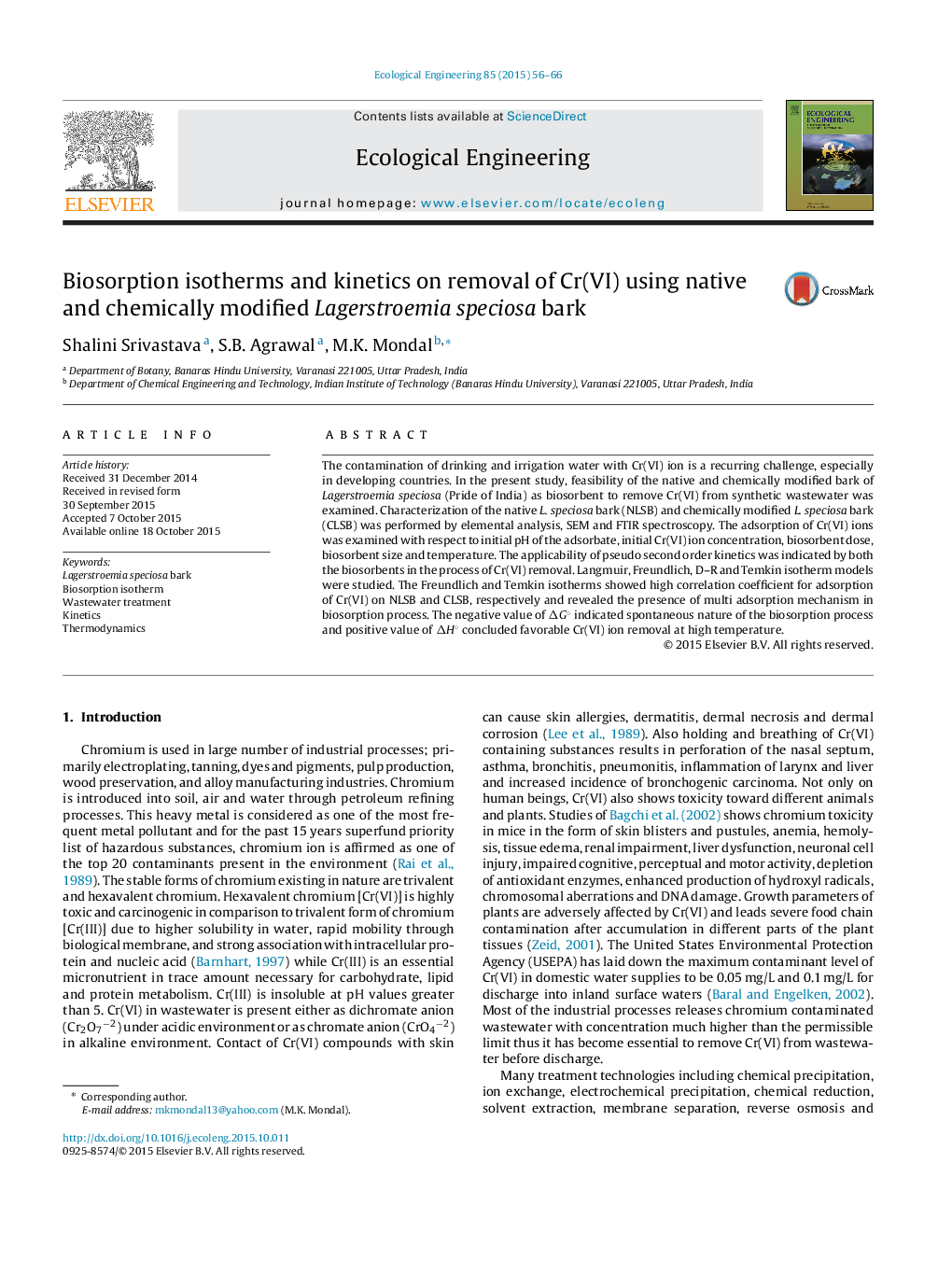| Article ID | Journal | Published Year | Pages | File Type |
|---|---|---|---|---|
| 6301586 | Ecological Engineering | 2015 | 11 Pages |
â¢The Lagerstroemia speciosa bark was used first time for biosorption of Cr(VI) from synthetic wastewater without any damage to the plant.â¢Significant difference in the SEM, FTIR and other physicochemical characteristics was observed by TLSB and CLSB.â¢Cr(VI) biosorption on both TLSB and CLSB followed pseudo second order kinetic model.â¢Cr(VI) biosorption on TLSB was well described by Freundlich model and Temkin showed good biosorption mechanism on CLSB.
The contamination of drinking and irrigation water with Cr(VI) ion is a recurring challenge, especially in developing countries. In the present study, feasibility of the native and chemically modified bark of Lagerstroemia speciosa (Pride of India) as biosorbent to remove Cr(VI) from synthetic wastewater was examined. Characterization of the native L. speciosa bark (NLSB) and chemically modified L. speciosa bark (CLSB) was performed by elemental analysis, SEM and FTIR spectroscopy. The adsorption of Cr(VI) ions was examined with respect to initial pH of the adsorbate, initial Cr(VI) ion concentration, biosorbent dose, biosorbent size and temperature. The applicability of pseudo second order kinetics was indicated by both the biosorbents in the process of Cr(VI) removal. Langmuir, Freundlich, D-R and Temkin isotherm models were studied. The Freundlich and Temkin isotherms showed high correlation coefficient for adsorption of Cr(VI) on NLSB and CLSB, respectively and revealed the presence of multi adsorption mechanism in biosorption process. The negative value of ÎG° indicated spontaneous nature of the biosorption process and positive value of ÎH° concluded favorable Cr(VI) ion removal at high temperature.
